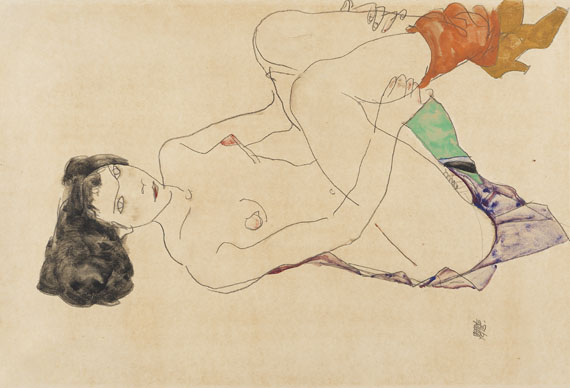Dictionary


Stuttgart New Secession
The "Stuttgarter Neue Sezession" (Stuttgart New Secession) came into existence in 1929 as a reaction to the "old" Secession, which was founded in Stuttgart in 1923. The biggest innovation of the "Stuttgart New Secession" was the abolition of the jury, which traditionally selected the paintings for the exhibition. The jury criteria had also led to the formation of other associations in the 1920s.
The "Stuttgart New Secession" was different from the other groups in terms of its commitment to one artistic tendency, "expressive Realism", which is why the Stuttgart New Secession was a rather small group, over the years it grew from an initial eight members to seventeen. What was unusual for an exhibition association was the relative homogeneity of the works made by the group's members, the picturesque dominates the picture and attains an almost tactile plastic effect in portrait, landscape or still life.
Three exhibitions had been organized before the compulsory liquidation of the "Stuttgart New Secession" through the National Socialists. A catalogue with the group's statute was released on occasion of the first exhibition in 1929. The most relevant founding fathers of the group were Wilhelm Geyer, Manfred Henninger, Manfred Pahl, Alfred Lehmann and Gustav Schopf.
The "Stuttgarter Neue Sezession" (Stuttgart New Secession) came into existence in 1929 as a reaction to the "old" Secession, which was founded in Stuttgart in 1923. The biggest innovation of the "Stuttgart New Secession" was the abolition of the jury, which traditionally selected the paintings for the exhibition. The jury criteria had also led to the formation of other associations in the 1920s.
The "Stuttgart New Secession" was different from the other groups in terms of its commitment to one artistic tendency, "expressive Realism", which is why the Stuttgart New Secession was a rather small group, over the years it grew from an initial eight members to seventeen. What was unusual for an exhibition association was the relative homogeneity of the works made by the group's members, the picturesque dominates the picture and attains an almost tactile plastic effect in portrait, landscape or still life.
Three exhibitions had been organized before the compulsory liquidation of the "Stuttgart New Secession" through the National Socialists. A catalogue with the group's statute was released on occasion of the first exhibition in 1929. The most relevant founding fathers of the group were Wilhelm Geyer, Manfred Henninger, Manfred Pahl, Alfred Lehmann and Gustav Schopf.
Offers
Headquarters
Joseph-Wild-Str. 18
81829 Munich
Phone: +49 89 55 244-0
Fax: +49 89 55 244-177
info@kettererkunst.de
Louisa von Saucken / Undine Schleifer
Holstenwall 5
20355 Hamburg
Phone: +49 40 37 49 61-0
Fax: +49 40 37 49 61-66
infohamburg@kettererkunst.de
Dr. Simone Wiechers / Nane Schlage
Fasanenstr. 70
10719 Berlin
Phone: +49 30 88 67 53-63
Fax: +49 30 88 67 56-43
infoberlin@kettererkunst.de
Cordula Lichtenberg
Gertrudenstraße 24-28
50667 Cologne
Phone: +49 221 510 908-15
infokoeln@kettererkunst.de
Hessen
Rhineland-Palatinate
Miriam Heß
Phone: +49 62 21 58 80-038
Fax: +49 62 21 58 80-595
infoheidelberg@kettererkunst.de
We will inform you in time.




